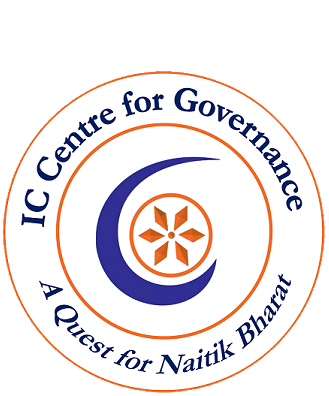The Government has budgeted for 2021-22 a total expenditure of Rs. 34.83 lakh crore (revenue expenditure: Rs. 29.29 lakh crore; capital expenditure: Rs. 5.54 lakh crore), against the 2020-21’s revised estimates of Rs. 34.50 lakh crore (revenue expenditure: Rs. 30.11 lakh crore; capital expenditure: Rs. 4.39 lakh crore). Thus, total expenditure budgeted for 2021-22, in nominal terms, is more or less the same as in 2020-21. Which means that total expenditure budgeted for 2021-22, in real terms, is less than that in 2020-21. But the share of capital expenditure in total expenditure is budgeted to go upmarginally -- from 2.25% of the estimated GDP in 2020-21 to 2.49%of the GDP projected for 2021-22.
Mahatma Gandhi National Rural Employment Guarantee Programme (MGNREGP) has been budgeted an outlay of Rs. 73,000 crore for 2021-22 against the revised estimates of Rs. 1,11,500 crore for 2020-21. Why such a large reduction? It seems the Government hopes that the growth it expects in 2021-22 will substantially reduce the demand for work under MGNREGP.
Jal Jeevan Mission /National Rural Drinking Water Mission has been budgeted an outlay of Rs. 50,011 crore for 2021-22 against the revised estimates of Rs. 11,000 crore for 2020-21. This is great, but what is the outcome the Government expects to achieve through this outlay?
Jobs and Skill Development Programme has been budgeted an outlay of Rs. 3,482 crore for 2021-22 against the revised estimates of Rs. 3,885 crore for 2020-21 and the actuals of Rs. 5,609 crore for 2019-20. Why such a reduction for a critically important programme?
Revised estimates of receipts on account of privatisation during 2020-21 are Rs. 32,000 crores against the budget estimates of Rs. 2,10,000, or just 15.24% of the target. Why? Covid-19. How can Covid-19 stand in the way of privatization, especially when there was a lot of financial liquidity, with the stock markets doing very well? Despite such a huge shortfall in realizing the target for 2020-21, the target for 2021-22 has been put at Rs. 1,75,000 crore. Is this advisable? What will happen if the Government again miserably fails in achieving its target? Probably, the fiscal deficit will go up.
Interest payments have been budgeted an outlay of as much as Rs. 8.10lakh crore for 2021-22 against the revised estimates of Rs. 6.93lakh crore for 2020-21, eating away as much as 52.40% of the Government’s total tax revenue!This means that for financing the expenditures other than interest payments, amounting to Rs. 26.74 lakh crore, the Government will have resources of only Rs. 11.67 lakh crore and will have to finance the balance through borrowings and other liabilities. And to the extent the receipts from privatization fall short of the target, the reliance on borrowings and other liabilities will be higher. Is this sustainable?
Finally, the Finance Minister has talked about the viability of Power Distribution Companies. This is what she said: “The viability of Distribution Companies is a serious concern. A revamped reforms-based result-linked power distribution sector scheme will be launched with an outlay of Rs. 3,05,984 crores over 5 years. The scheme will provide assistance to DISCOMS for Infrastructure creation including pre-paid smart metering and feeder separation, upgradation of systems, etc., tied to financial improvements.”
Not too long ago, the Government had launched a scheme called UDAY (UjwalDiscom Assurance Yojana) to improve the operational and financial efficiency of the State power distribution companies, with the outcomes to be measured through (a) reduction of AT&C loss to 15% in 2018-19 and (b) reduction in gap between average cost of supply and average revenue realized to zero by 2018-19. The scheme has failed and the state power distribution companies continue to be a huge burden on the country’s public finances.
The Government may go ahead with its reforms-based result-linked power distribution sector scheme, but in order that the scheme doesn’t meet the fate of UDAY and other such initiatives (e.g., Restructured Accelerated Power Distribution and Reforms Programme), it MUST articulate the theory of change underlying the proposed scheme and ensure that it is implemented the way it is assumed to be implemented – it is certainly doable.
- Anand P Gupta, Former Professor of Economics, Indian Institute of Management, Ahmedabad
